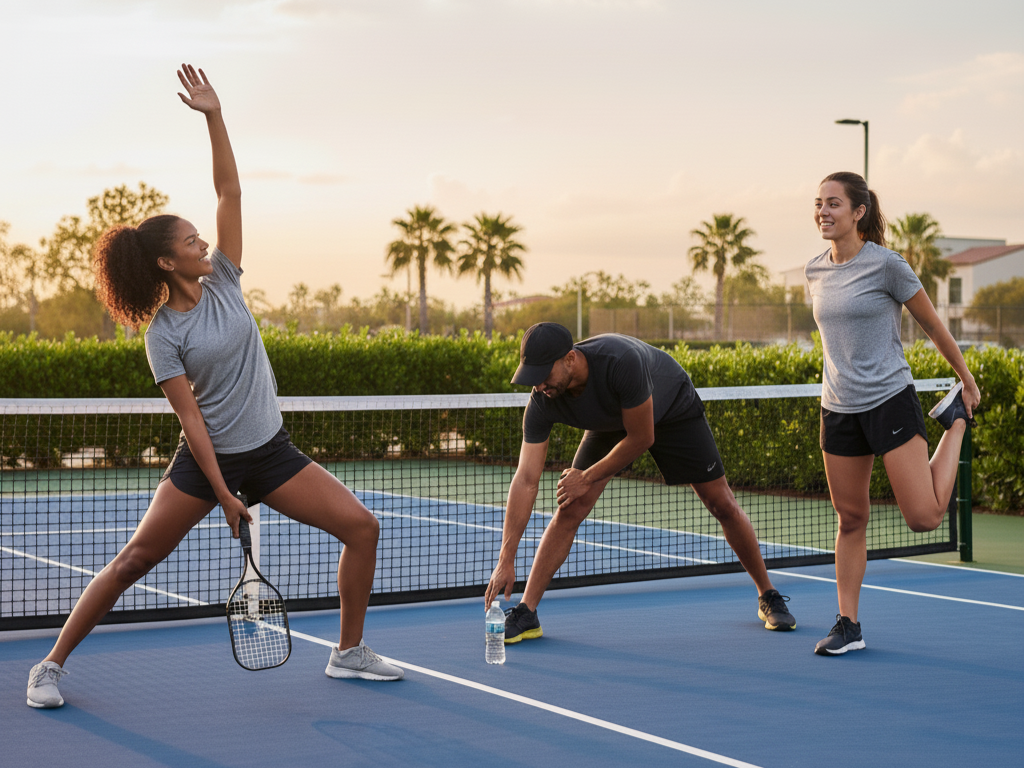End Your Game Right: The Essential Pickleball Cool-Down Routine
Finished your pickleball game? Don't leave yet. Skipping a cool-down is a mistake that often leads to stiffness and injury. It's time to help your body recover.
A proper cool-down is crucial for recovery. It helps your body smoothly transition back to rest, lowering your heart rate, fighting muscle stiffness, and minimizing that next-day ache known as DOMS (Delayed Onset Muscle Soreness).
Here is the essential, four-part routine you should follow after every pickleball match.
Recommended Post-Game Cool-Down
1. Slow Down (5–10 Minutes)
The very first step is to bring your body down gradually with no sudden stops.
Slow Walk: Walk slowly around the court or surrounding area. This gentle movement is vital. It keeps blood flowing, smoothly reducing your heart rate and preventing the light-headedness that can occur if blood pools in your legs. Think of it as hitting the 'decelerate' button on your workout.
2. Static Stretching (Hold 15–30 Seconds)
Once your heart rate has dropped, transition to static stretching, which means holding a stretch without bouncing. Aim to hold each stretch for 15–30 seconds and repeat it 2–3 times. Remember: stretching should feel like a gentle pull, not pain.
Focus on the major muscle groups stressed by pickleball's repetitive movements:
Quadriceps Stretch: Stand tall and pull one foot back toward your glutes. This opens up the front of your thigh. Use the net or a partner for balance if needed.
Hamstring Stretch: Sit down with one leg extended or stand and gently reach toward your toes, bending at the waist. Target the back of your thigh, a muscle group heavily used in quick court movements.
Cross Chest Arm Stretch: Bring one arm across your chest and use the opposite arm to gently pull it closer, stretching the rear of your shoulder. This helps relieve tension from swinging your paddle.
Side Stretch: Reach one arm overhead and gently bend your torso to the side, feeling the stretch along your oblique and latissimus muscles. This is key for trunk rotation used during drives and serves.
Toe Touches: Bend gently at the waist to touch your toes, focusing on the hamstrings and lower back.
3. Deep Breathing
As you move through your stretches, incorporate deep, slow breaths. Taking full, mindful breaths helps to relax your nervous system and increases oxygen flow to your recovering muscles, which directly promotes faster healing and relaxation.
4. Foam Rolling
If you have access to one, use a foam roller to target tight spots. Spending a few minutes rolling over your calves, quadriceps, and back helps perform myofascial release. This is a fancy term for releasing muscle tension and "knots" that built up during play, accelerating your recovery.
Why This Routine Matters
Taking just 10–15 minutes for this cool-down routine pays massive dividends. It not only improves your flexibility and reduces the likelihood of an acute injury, but it also ensures you're significantly less stiff the next morning. By aiding in your body's smooth transition from activity to rest, you maximize your recovery and stay ready for your next great game!

